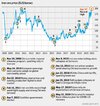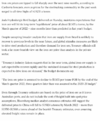- Joined
- 26 October 2018
- Posts
- 21
- Reactions
- 24
HI
I trade the asx200 index and iron ore is often a large mover/impact on the index. I've tried to access various web sites to track futures prices reliably but got frustrated with outages, unreliable feeds etc . like for Singapore and Dalian exchanges. This is about 12 months ago.
Have things changed? Can you recommend something highly reliable free or paid to track daily trading. Is the Dalian the best market to track for correlation to 'iron ore' moves in the Australian market
I trade the asx200 index and iron ore is often a large mover/impact on the index. I've tried to access various web sites to track futures prices reliably but got frustrated with outages, unreliable feeds etc . like for Singapore and Dalian exchanges. This is about 12 months ago.
Have things changed? Can you recommend something highly reliable free or paid to track daily trading. Is the Dalian the best market to track for correlation to 'iron ore' moves in the Australian market





